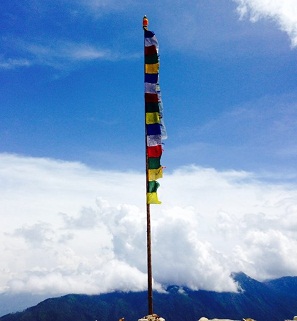Introduction to Bhutan
 The Kingdom of Bhutan is nestled in the Eastern Himalayas bounded to the North by China and India in the remaining four sides. It is a landlocked rugged country with an area of 38, 398 sq km and a population of 7,00,000 (PHCB,2005). For centuries Bhutan had remained isolated from the rest of the world. The Kingdom opened its door to the outside in 1961 when the first planned development activity was initiated by the Late Third King of Bhutan. The arduous process of the first few motorable roadways connecting the interior with the southern border with India started then along with establishment of a few schools catering to modern form of education, and a few health centers with the assistance of the Government of India. Today, Bhutan has already completed some 10 phases of 5-year plans, and has managed to alleviate poverty to a great extent, foster good governance and is now geared to self-reliance by 2020. All the development activities bringing the country from the status of an under-developed nation to a developing nation are credited to the good and friendly relations with neighboring countries and international aid agencies.
The Kingdom of Bhutan is nestled in the Eastern Himalayas bounded to the North by China and India in the remaining four sides. It is a landlocked rugged country with an area of 38, 398 sq km and a population of 7,00,000 (PHCB,2005). For centuries Bhutan had remained isolated from the rest of the world. The Kingdom opened its door to the outside in 1961 when the first planned development activity was initiated by the Late Third King of Bhutan. The arduous process of the first few motorable roadways connecting the interior with the southern border with India started then along with establishment of a few schools catering to modern form of education, and a few health centers with the assistance of the Government of India. Today, Bhutan has already completed some 10 phases of 5-year plans, and has managed to alleviate poverty to a great extent, foster good governance and is now geared to self-reliance by 2020. All the development activities bringing the country from the status of an under-developed nation to a developing nation are credited to the good and friendly relations with neighboring countries and international aid agencies.
Unlike in countries elsewhere where civil strife and unrest have shaken governments, Bhutan’s successful transition into a constitutional form of democracy in 2008 was the vision and reality made possible by a self-less monarch, our Fourth King, His Majesty Jigme Singye Wangchuck. Upon signing of the Constitution of the Kingdom of Bhutan in 2008, he relinquished his Throne to the present monarch, His Majesty Jigme Khesar Namgyal Wangchuck as Head of State. Today, Bhutan has an elected Parliament and a Government elected by the people.
The philosophy of “Gross National Happiness” as expounded by our Fourth King, continues to spread across the world, and is steadfast as our Kingdom’s main development philosophy overriding the usual gross domestic product in the measurement of economic growth of a nation.
